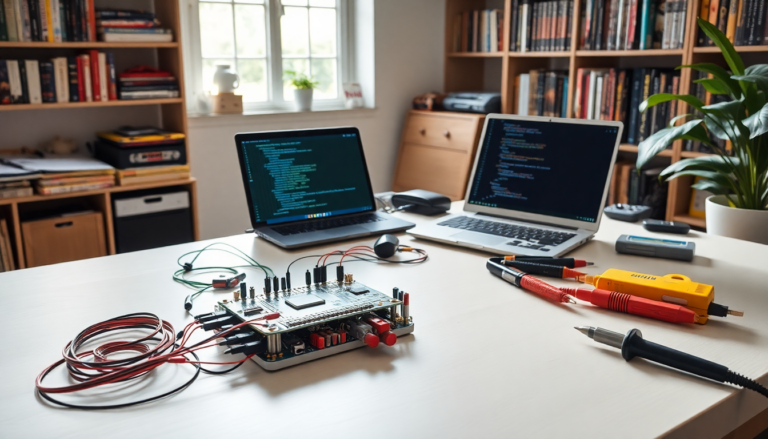Argomenti trattati
In the fast-paced world of technology, enthusiasts are constantly pushing the limits of what microcontrollers can do. Recently, we’ve seen an exciting project that brings to life a fully programmable retro gaming console powered by the ESP32. This versatile microcontroller boasts built-in Wi-Fi and Bluetooth, opening up a realm of possibilities. But this journey isn’t just about innovation—it’s also about overcoming challenges in the maker community.
Project Overview
The retro gaming console project kicked off with a clear goal: make the most of available resources. Within days, the creator pieced together a setup featuring a small ST7735, a 1.8″ 160×128 color screen, despite its tricky pin layout for breadboarding. Alongside this, they repurposed a joystick from an Arduino starter kit. While the initial components weren’t perfect, the project quickly picked up steam.
The creator couldn’t hide their excitement about the progress they’d made. They successfully coded a library to manage the hardware. Sure, there’s still room for improvement in rendering more complex game scenes, but the project’s potential is undeniable. The intention to leverage the DMA controller shows a solid understanding of the nitty-gritty of hardware programming. Isn’t it inspiring to see such dedication?
Community Engagement and Feedback
Despite the buzz around the project, community feedback has been a bit underwhelming. In discussions on a forum dedicated to ESP32 projects, it became clear that many members are more interested in seeking assistance than engaging with project showcases. The creator reflected on their experience, noting that previous tutorials didn’t spark much interest, leaving them questioning the value of sharing their work.
Rui, a moderator on the forum, confirmed that the platform primarily focuses on providing help, which might explain the lack of engagement with project postings. Still, this hasn’t dampened the creator’s enthusiasm for sharing valuable tutorials. There’s a treasure trove of knowledge about the ESP32 just waiting to be uncovered.
Rui even suggested using Facebook to share projects, highlighting the need for adaptive strategies in community engagement. While the creator acknowledged this idea, they expressed some hesitation about using social media for technical content, preferring spaces that are more suited to project documentation. Do you think social media is the right place for technical discussions?
Future Directions and Considerations
As the project continues to develop, the creator is open to the possibility of sharing detailed tutorials. Although feedback has been modest so far, there’s definitely potential for growth. Platforms like Instructables or Hackster could help reach a broader audience, but the creator values the freedom of writing in Markdown, which fits seamlessly with their workflow in VScode.
This ongoing dialogue within the community emphasizes the importance of adapting to user interests while still focusing on meaningful contributions. The creator’s commitment to assisting others with their questions about the ESP32 reaffirms their dedication to the maker ethos. Isn’t it refreshing to see such passion in the tech community?
In conclusion, the journey of building a retro gaming console with the ESP32 is a testament to creativity and resilience in the face of challenges. While community feedback may vary, the drive to innovate and share knowledge remains a cornerstone of the maker culture. What will the next chapter hold for this ambitious project?

